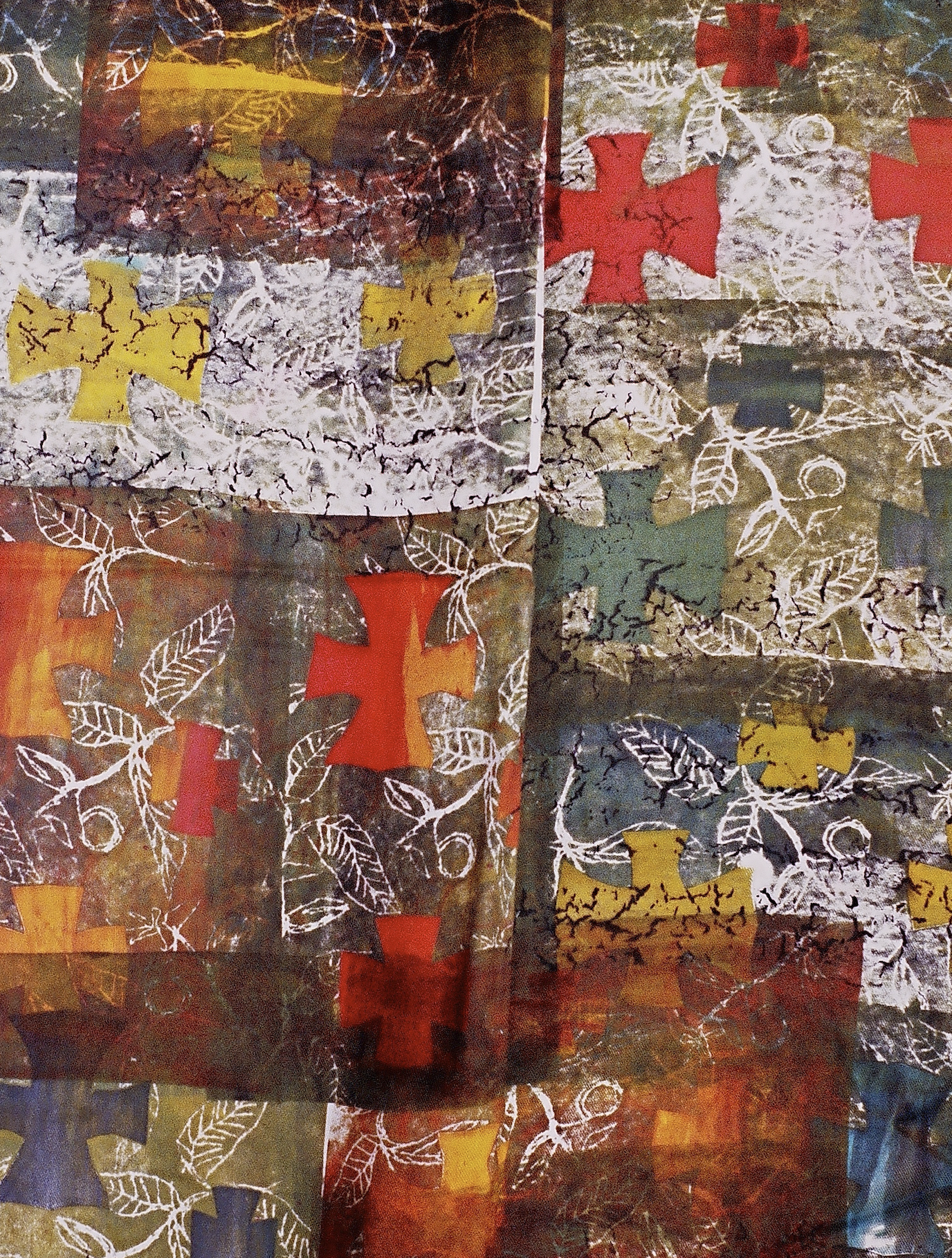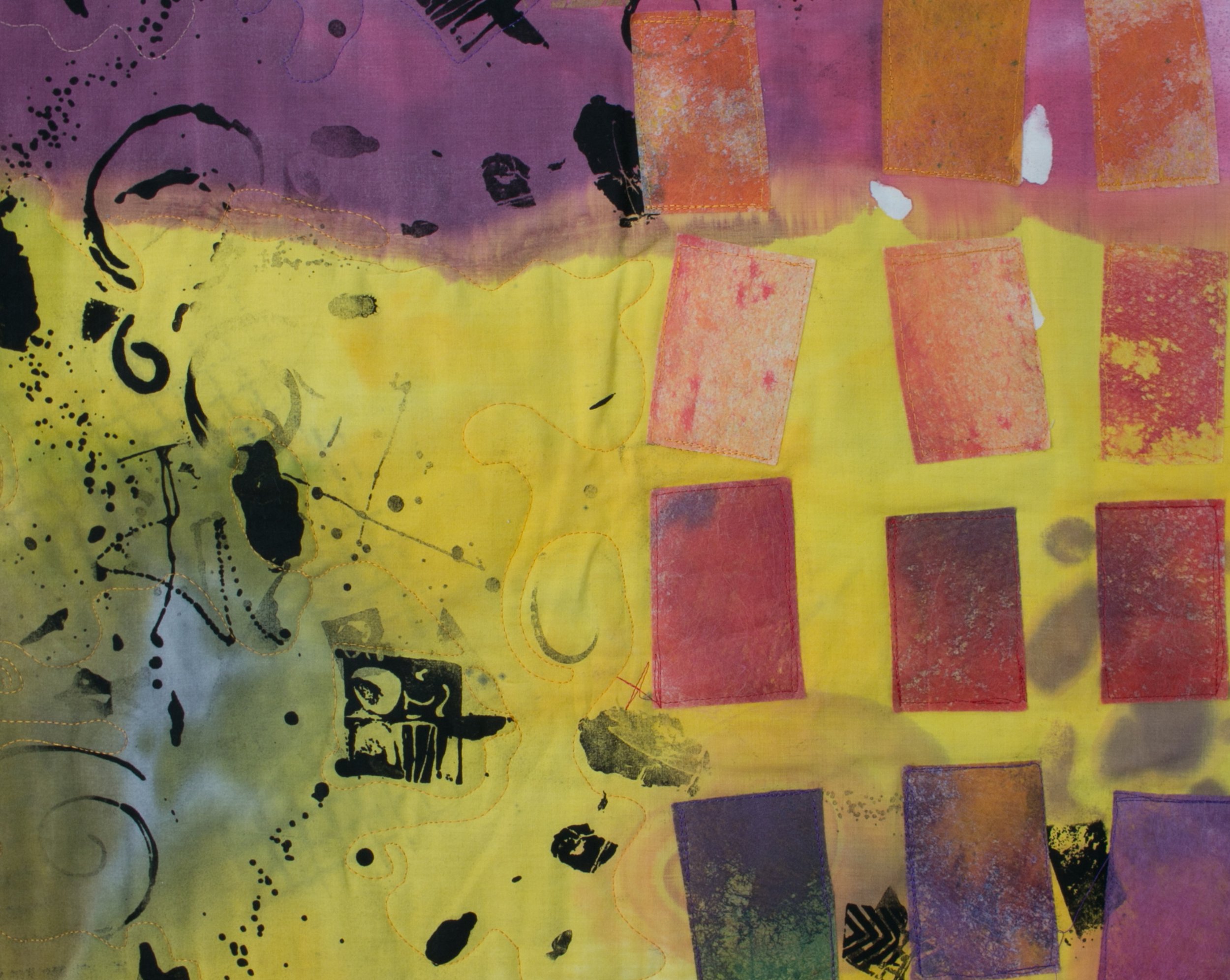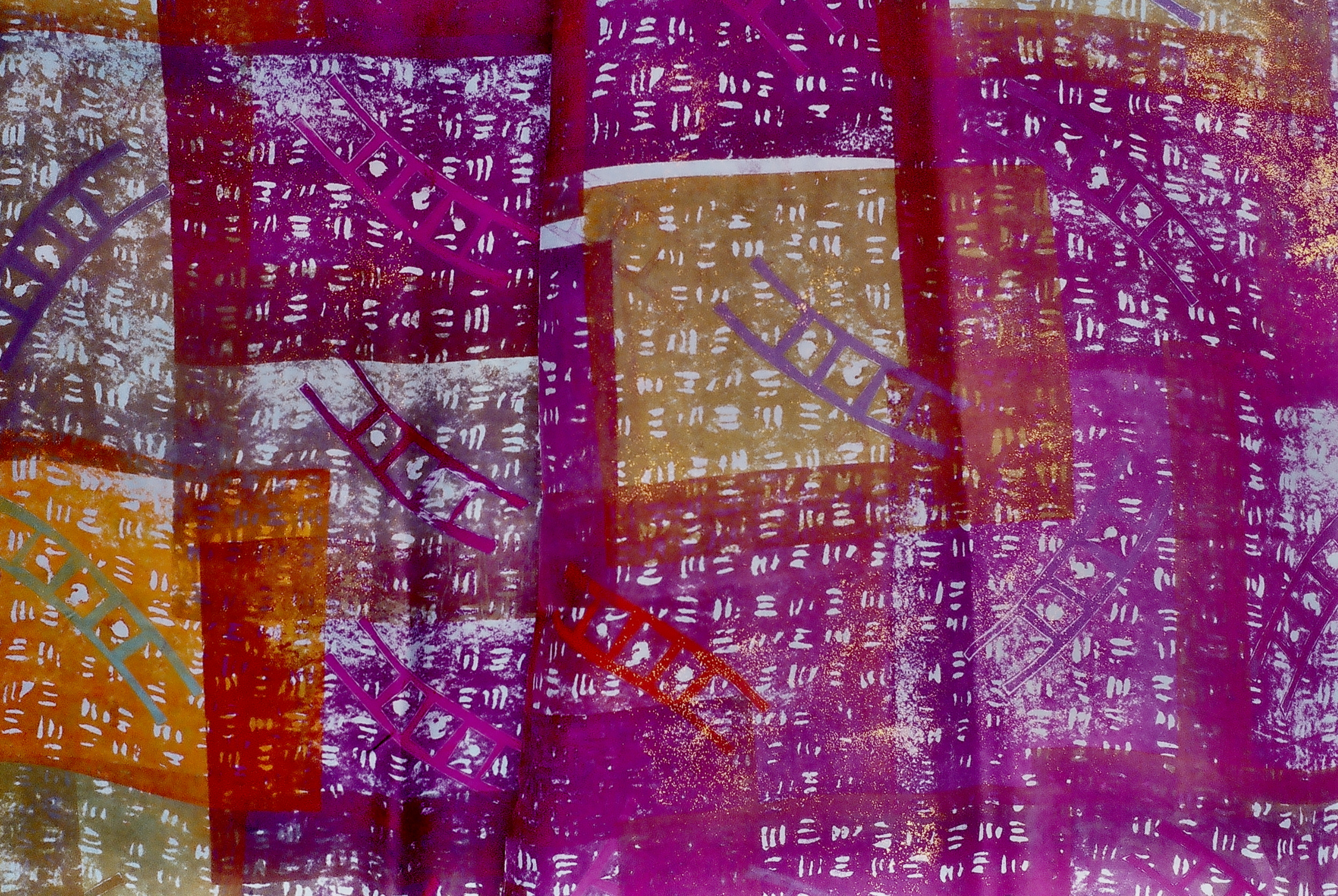Next session begins September 30, 2024
Registration open!
Eight-week online class.

In this eight week online course, you’ll learn how to use fiber-reactive dyes as a printed application, which is very different from the approaches used for immersion dyeing.
Think of printing as the other half of the fiber reactive dye equation.
When you know how to color yardage and also how to print pattern on it, the possibilities are limitless.
Your classes are the most straight forward, linear, honest and worth every penny spent.
I thank you so much for your approach to teaching.
Sally N.
The course includes:
An overview of how fiber reactive “work”
The difference between pure dyes versus proprietary formulas
Auxiliary chemicals that assist in the dye printing process
The best fabrics to choose for printing
Best practices for mixing and storing dyes
Creating samples that will demonstrate saturation, color commingling and color dominance
Methods of applications, including stamping, stenciling, hand painting and screen printing/thermofaxes
Batching as opposed to steaming
Improv Printing – printing from a screen that has been coated with dye and allowed to dry
My signature invention: Multi-colored Printing with an Interfacing Stencil – three patterns printed at once, just like magic!
Participants will create a variety of samples in the first five weeks of class and will then focus on larger pieces and yardage. Completed fabrics will be colorful, stable and can be used for clothing, quilts or home dec applications.
Print Perfection was designed to be a companion to Dye Mastery: From White to Wow, but can be taken as a stand alone class, as well.
Your class has been such a pleasure to attend, thanks in part to your exceptional teaching abilities.
Even when you need to provide redirection or feedback, you have a remarkable talent for doing so in a constructive, uplifting manner that never feels critical or discouraging. So...thank you!
Diana B.
Explore the spontaneity of applying dye — specifically to the screen surface.
Participants will create a variety of samples in the first five weeks of class and will then focus on larger pieces and yardage.
Completed fabrics will be colorful, stable and can be used for clothing, quilts or home dec applications.
Learn to plan and order printed images, and how to prepare to execute your vision.
This course is designed to give you an integral understanding of working with fiber reactive dye as a mark-making tool — directly on fabric surfaces vs. in the dye bucket.
Plus my signature invention! Multi-colored Printing with an Interfacing Stencil – three patterns printed at once, just like magic!
In-depth techniques.
16+ lessons released over eight weeks
PDF notes and appendix
Private online community on Circle where you can share work and ask questions - no more Facebook!
Three live Q&A sessions with Jane during the workshop

“This has been a fabulous class. I have learned tons and I know I will continue to incorporate these techniques in my pieces. Now it is time to sew with them!
Thanks for the way you teach, share, help, and teach again!”
“I so appreciate you and your teachings.
It occurred to me like a bolt of light when I was watching one of your recordings lately...Wonderful teachers offer us so much more than academics.
You teach us how to live a life of abundance rich in creative possibility and love.”
FREE Bonus Videos!
Steaming Vs Batching for Fiber Reactive Dyes:
What’s the Difference?
Fiber reactive dyes need to be cured in order to be stable. In this bonus video I outline the differences between steaming fabric and batching fabric, and make recommendations based on my own experience and preferences.
How to Choose Fabric for Dye Printing:
Tips to Keep in Mind
Making smart choices when you choose fabric for printing is directly related to an optimum outcome. In this bonus video, I talk about important considerations (realities!) to keep in mind as you make your fabric selection.
Re-Screening Your Silkscreen:
Step-by-Step Guide & Expert Care Tips
A silkscreen is a valuable tool when you are working with printed dye, but screens are not inexpensive! In this video, I demonstrate how to reclaim a screen by putting new polyester mesh on it, using a staple gun. Quick and efficient!
Live Events to Share and Connect
A private online community on Circle available to students 24/7 — ask questions and connect with other fiber enthusiasts!
Three live one hour Q&A sessions with Jane, recorded for future reference.
Q&A Session #1 — Monday October 14th 2-3pm CDT
Q&A Session #2 — Sunday November 3rd 2-3pm CT**
Q&A Session #3 — Monday November 25th 2-3pm CT
** DAYLIGHT SAVINGS ENDS
Eight-week workshop with lessons released weekly with two studio, work weeks.
All the benefits of studying with Jane in-person, without the price tag.
Work at your own pace - all content is yours to keep forever.
$257

FAQs
-
All lessons are pre-recorded and released over an eight week period. There are two “studio” weeks when no new material is released. Students use this time to review previous lessons or catch up if they were traveling or didn't get a chance to watch yet! Also during those weeks, there are 90 minute live Q&A sessions on Zoom.
These are also recorded and dates are below:
• Q&A Session #1 — Monday May 20th 2-3pm CDT
• Q&A Session #2 — Monday June 10th 2-3pm CDT
• Q&A Session #3 — Monday June 17th 2-3pm CDT
After class ends, you can watch it indefinitely for as long as you want.
When we repeat the course you can join the next session for a very small fee (under $30) in order to attend the new live Q&A sessions again, and work on the whole class again with a new cohort.
We think this is the best possible hybrid class model that exists, and our students seem to agree.
-
Plenty of newbies have taken it and loved it and come back for more. No experience required!
-
No, we provide a private discussion group on our platform, Circle, so there is no Facebook or social media involved.
-
Hybrid courses follow a live schedule and are made up of materials such as pre-recorded videos, live lessons and Q&As, PDF’s and presentations that each student can work through at their own speed.
-
There isn ’t any heat press work but all of the techniques could be used in mixed media pieces with the heat press botanicals.
















